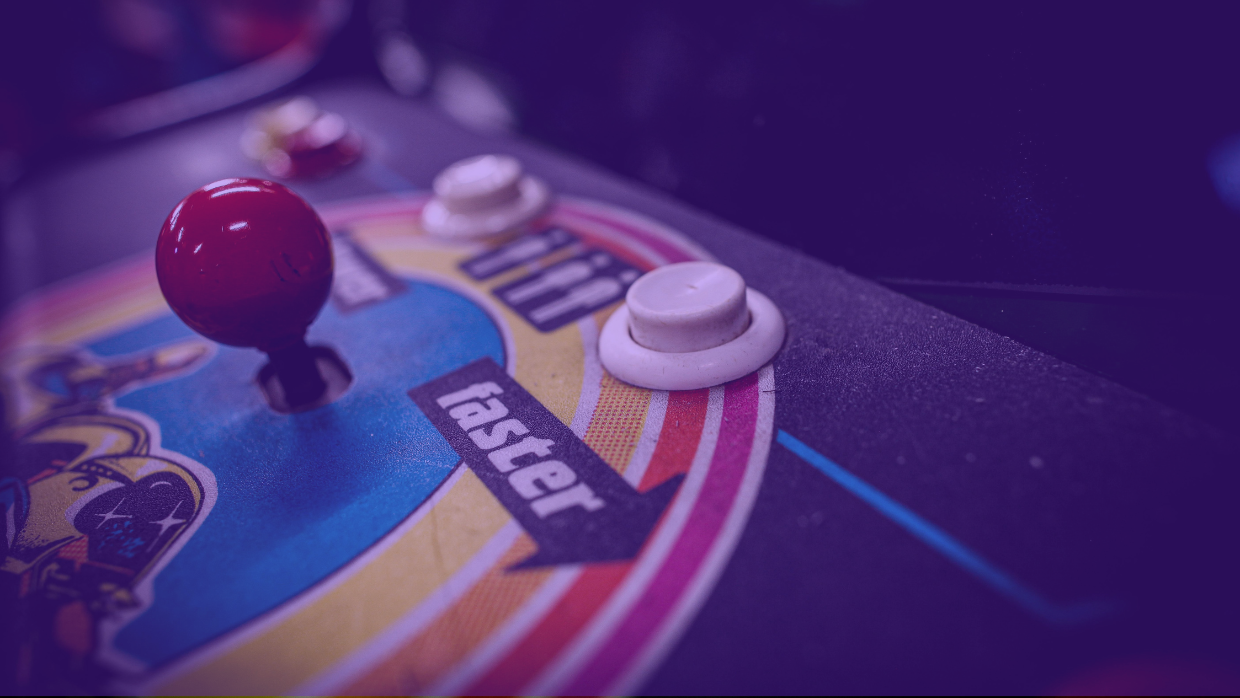Will AI Replace Game Developers?
June 21, 2025 11 min read

For developer teams and leaders, AI in game development is both a breakthrough and a pressure test. It promises faster workflows and leaner pipelines but also raises tough questions about roles, skills, and creative ownership.
It’s already becoming a core part of how games are made, from tools that generate environments in minutes to smarter NPCs. According to Unity’s 2025 Gaming Report, 79% of developers feel positive about AI’s impact. But while adoption is accelerating, some hesitancy remains.
AI isn’t replacing developers, but is shifting how they work. As machines take on the repetitive grind, developers have more room to focus on what matters — creativity, design, and player experience.
What AI Can and Can’t Do in Game Development
AI can be a powerful collaborator, handling the repetitive, time-consuming work that frees up developers to focus on creative strategy and player experience.
AI can assist with tasks like procedural content generation, data analysis, and workflow optimization. It helps teams automate the mundane and reduces hours of manual effort to minutes. Artificial intelligence closes gaps in production, not imagination.
Even as these tools become more sophisticated, the heart of video game development remains human. Crafting a world that players care about still depends on human insight and creative intent, and these can’t be fully automated.
|
What AI Can Do |
What AI Can't Do |
|
Generate environments, levels, and game assets using procedural content generation. |
Invent truly original stories or worlds with emotional depth. |
|
Automate QA, bug testing, and performance analysis. |
Understand complex player psychology and emotional resonance. |
|
Enhance NPC behavior with adaptive logic and pathfinding. |
Replace narrative designers or lead collaborative storytelling. |
|
Personalize gameplay using player data and behavioral modeling. |
Make critical design decisions or balance creativity with vision. |
|
Support voice synthesis, sound design, and music creation. |
Capture human nuance, emotion, and creative intuition. |
|
Accelerate workflows to free up developer time. |
Replace team dynamics, iteration, or creative culture. |
|
Expand smaller teams’ capabilities so they can compete with bigger studios. |
Operate reliably at scale without human oversight. |
How Forward-Thinking Studios Are Using AI Today
AI is already transforming game development from the inside out. Leading studios are using it to amplify creativity, move faster, and even inform business decisions.
EA, for example, has embedded AI throughout its creative pipeline, transforming world-building and character creation in some of the company’s biggest titles. EA’s Stadium Creation Toolkit enabled developers to craft over 150 unique stadiums for College Football 25, while AI tools helped generate thousands of athletes with authentic detail and immersion.
Storytelling is also evolving. Games such as AI Dungeon let players shape living, adaptive worlds in real time. Nick Walton, CEO of Latitude.io, told the BBC, “We are at the start with AI, and as it advances, we will see very dynamic, adaptive worlds with characters that feel alive, with story arcs where you as the hero are doing unique things and having a very unique impact on the world.”
Meanwhile, Upheaval Games is pushing boundaries with Dreamer Portal, a no-code AI tool that lets developers create animated 3D worlds and characters by talking or typing. Co-founder Twain Martin reflected to Forbes, “We've spent 30 years learning how to do it the hard way. Now we're asking, what happens when AI does it all?”
Studios are also turning to AI for smarter business decisions. Creativ Company recently analyzed 1.5 million gamer conversations from Reddit, YouTube, and Discord in just 10 days — with the AI trained to understand slang, sarcasm, and nuance. This deep insight revealed what players really think about topics including monetization and exclusivity.
Is GenAI a Creative Cheat Code?
InZOI, the life simulation game from Krafton, has become a flashpoint in the debate over generative AI in game development. The team recently confirmed it used text-to-image, 3D printing AI, and video-to-motion tools to speed up asset creation and animation. While Krafton framed AI as a production aid, not a creative replacement, the announcement has split the community and sparked fresh debate.
Key Areas Where AI Is Transforming Game Development
|
Game Development Area |
How AI |
Examples of |
|
Market Insights & Player Data |
Analyze sentiment, predict trends, perform competitor analysis. |
Ludo.ai, Creativ LLM, AI sentiment analysis |
|
Design & Content Creation |
Generate storylines, art, assets, levels. |
Promethean AI, Scenario, 3DFY.AI, Rosebud AI |
|
Programming & Prototyping |
Accelerate coding, automate scripts and prototyping. |
Unity/Unreal AI plugins, Rosebud AI, Inworld SDK |
|
NPC Behavior & Gameplay |
Create adaptive NPCs, dynamic gameplay, dialogue. |
Inworld, NVIDIA ACE, reinforcement learning |
|
QA & Testing |
Automate bug detection, playtesting, balance. |
Modl:test, Modl:play, AI QA bots |
| Personalization & Retention |
Tailor gameplay, boost engagement and monetization. |
Player Experience Modeling, AI analytics, Adjust Growth |
The Rise of the AI-Native Game Developer
AI tools alone don’t create better games. The magic comes from engineers with AI skills who understand how to apply AI with intention. These specialists bridge the gap between cutting-edge technology and creative vision, ensuring AI enhances workflows without compromising quality or innovation.
Studios that prioritize this capability gain more than speed in the development process. They unlock flexibility, reduce friction, and build a foundation for adapting as AI evolves. Simply put, AI fluency is the new baseline for success.
The 2025 GDC State of the Game Industry report found that 52% of gaming developers work at studios using generative AI tools. But only 36% say they personally use such tools, although that is up from 31% the year before. Adoption is rising, but not everyone is keeping pace.
Here’s how to build a team that doesn’t just keep up with AI — they run with it. Whether you’re upskilling internally or focused on AI skills hiring, the goal is the same: build developers who can thrive with next-gen tools.”
Make AI Part of Everyday Work
Don’t relegate AI and machine learning to side projects or R&D silos. Bring it into the daily workflow. Encourage your team to try tools like Unity ML-Agents or Scenario on live projects. Let them test, prompt, tweak — and learn.
When AI becomes part of the rhythm, not a separate initiative, your team builds fluency fast. Confidence skyrockets. And suddenly, the future doesn’t feel threatening — it feels like a playground.
Focus on Practical, Momentum-Building Upskilling
Your developers don’t need theory — they need traction. Focus learning efforts on tools they can apply right now to build game assets, automate testing, or enhance NPC behavior.
Run internal hackathons. Create “what if” AI challenges. Reward experimentation. When learning feels like play, your team levels up without even realizing it.
Empower AI Champions
Spot your early adopters — then set them loose. Give them the space and visibility to explore deeply, share what they learn, and mentor others.
These AI champions become catalysts across your team. They reduce friction, boost adoption, and help transform your culture from cautious to curious.
Break Down Silos, Build Up Creativity
AI works best when disciplines collide. Encourage designers to collaborate with engineers on procedural systems. Pair narrative teams with prompt engineers using Inworld. Let tech artists co-own asset pipelines with generative tools.
The more your team blends perspectives, the more value they’ll unlock from AI — and the more innovative your game design becomes.
Lead with Purpose
As AI tools grow more powerful, studios have a choice: rush forward blindly, or move with purpose. Set clear guardrails. Define where AI adds value, where human creativity must lead, and how you’ll protect player trust. With that clarity, your team can push boundaries and stay grounded.
AI is transforming how games are made and what it takes to make them well. Success now comes from hiring gaming software developers with the skills, context, and mindset to use AI effectively.
![[XT] blog-How to Develop an AI Ready Game Team](https://x-team.com/hs-fs/hubfs/%5BXT%5D%20blog-How%20to%20Develop%20an%20AI%20Ready%20Game%20Team.png?width=667&height=349&name=%5BXT%5D%20blog-How%20to%20Develop%20an%20AI%20Ready%20Game%20Team.png)
Keep Moving Forward
The future of game development isn’t about human versus machine — it’s about teams that move in sync with both. As AI transforms how games are made, the real advantage lies in developers who adapt, experiment, and stay grounded in what makes games worth playing: creativity, emotion, and player experience.
The challenge now is clear — not just to adopt AI, but to lead with it. Studios that embrace this shift, invest in AI skills hiring, and build cultures of continuous learning will outpace those still waiting on the sidelines.
X-Team delivers the developers and software development solutions to help you meet that future head-on. Whether you need AI-literate engineers or full-stack agility, we’ll help you build teams that don’t just keep up — they set the pace.
TABLE OF CONTENTS




